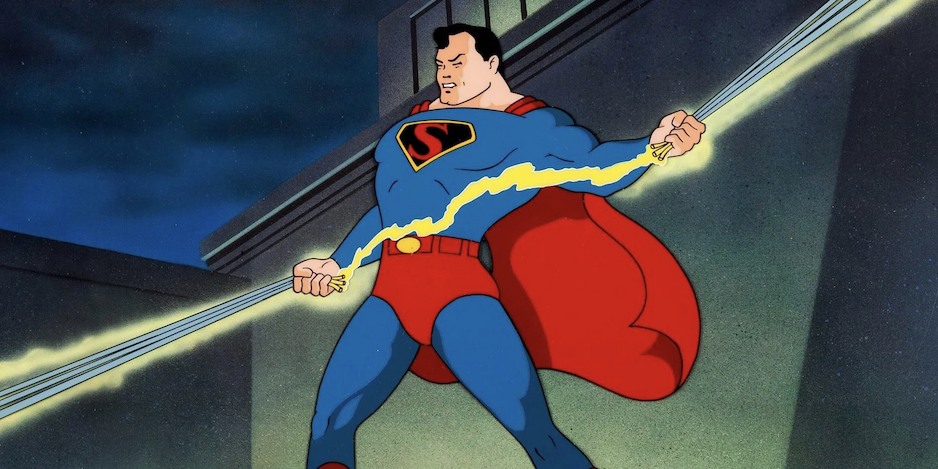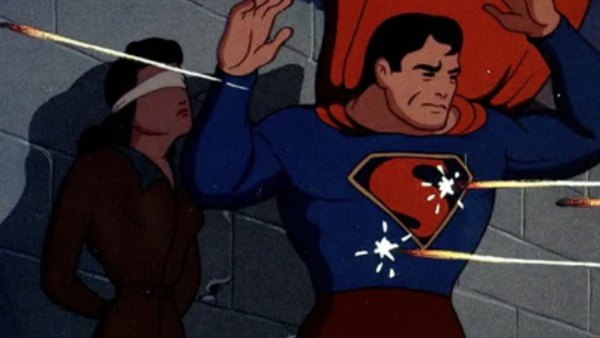“Faster than a speeding bullet, more powerful than a locomotive, able to leap tall buildings in a single bound.” It was these stirring words that launched Superman off the comic book pages and onto theatre screens, with legendary animator Max Fleischer producing a series of animated shorts that would truly bring this iconic character to life.
Max Fleischer's Superman cartoons are an absolute treasure to behold and a testament to the creativity and artistry of their time. Released between 1941 and 1943, these animated shorts brought the iconic superhero to life in a way that captivated audiences and paved the way for future superhero adaptations. The animation style found in these cartoons is nothing short of remarkable, with vibrant colours and fluid movements that bring Superman's adventures to life in a way that was unprecedented at the time. and what allowed these animated gems to look so great is that Max Fleischer's studio employed a unique technique known as the "Stereo-Optical Process" which involved animating over live-action footage. This method brought a lifelike quality to the characters and added a sense of depth and realism rarely seen in animation at that time and easily rivalled what was being done over at Disney. The smoothness and fluidity of the animation remain impressive even by today's standards, making the cartoons visually appealing and engaging.
The voice acting is another standout feature of these cartoons. with Bud Collyer, who voiced Superman and Clark Kent, delivering a pitch-perfect performance that defines the character to this day. His deep, authoritative voice exudes strength and confidence, perfectly matching the hero's larger-than-life persona. The supporting cast also brings their characters to life with their excellent voice work, adding depth and personality to the stories. As for the storytelling, these cartoons are concise and engaging with each short episode presenting a self-contained story that showcased Superman's abilities and challenges without the need for much dialogue. The pacing is tight, ensuring that the audience remained hooked from start to finish. The narratives often incorporate sci-fi elements and would present Superman with formidable adversaries to tackle, adding excitement and suspense at every turn. Furthermore, the musical scores composed by Sammy Timberg added an extra layer of excitement and grandeur to the cartoons with the sweeping orchestral arrangements that perfectly complemented the action on screen, enhancing the emotional impact of key moments and heightening the overall cinematic experience.
Sadly, by 1941 Max and his brother Dave Fleischer, who directed the short films while his brother Max was the producer, were no longer able to cooperate with each other due to financial problems and Dave's very public adulterous affair with his secretary – way to ruin a good thing guys – and with these two men gone Paramount renamed the organization Famous Studios and while the sleek gorgeous look of the series continued, to varying degrees, there was a noticeable change in the storylines of these later shorts as the first nine cartoons by the Fleischer Brothers dealt mostly with things like mad scientists and giant dinosaurs while the stories under Famous Studios would focus more on World War II propaganda. Unfortunately, this led to so some downright racist depictions of the Japanese people, but as this was wartime I guess vilifying your enemy wasn’t considered a bad thing, even in a cartoon.
Note: In the short “Eleventh Hour” Superman commits numerous acts of sabotage in the city of Yokohama, sinking several battleships which lead the Japanese military to threaten to execute Lois Lane if Superman commits one more act of sabotage, and all I could think was, "Guys, that's just gonna piss him off."
Stray Observations:
• While the opening narration states that Superman is “Able to leap tall buildings in a single bound” it was in this run of animated shorts that Superman was first shown to have the ability to actually fly and not just jump really high.
• The mad scientist in the first Superman cartoon was clearly modelled after actor Boris Karloff from the Universal classic The Black Cat (1934).
• The look and style of Bruce Timm’s Batman: The Animated series were heavily influenced by these visually rich-looking Max Fleischer Superman cartoons.
• Kerry Conran’s 2004 science fiction adventure film Sky Captain and the World of Tomorrow borrowed the robots from the “The Mechanical Monsters” Superman cartoon.
• Legendary animated Hayao Miyazaki also borrowed those robot designs for his film Castle in the Sky as well as for an episode of Lupin the Third Part II.
• In “Eleventh Hour” with the amount of destruction we see Superman unleash on the Japanese military I’m not sure how WWII lasted more than a week or two.
• In “The Artic Giant” Superman battles a dinosaur that was found frozen in the Artic, then thawed out so it could go on a citywide rampage and it's obvious that this cartoon influenced Ray Harryhausen's The Beast from 20,000 Fathoms which in turn would later inspire Godzilla.
Hands up if you want a live-action Superman movie where he fights a dinosaur.
What truly stands out about these cartoons is their ability to capture the essence of Superman's character, from his iconic red and blue costume to his unwavering sense of justice, every aspect of Superman is faithfully portrayed by the Fleischers. The animators masterfully depict his superhuman abilities, making each action sequence thrilling and dynamic, on the other hand, modern fans more familiar with Superman’s strength and powers as depicted in later movies may find it a little weird to see Superman suffering under the effects of tear gas or engaging in fisticuffs with random groups of gangsters. This incarnation of Superman may be a “Man of Steel” but he’s not moving planets out of orbit or melting robots with heat vision – his eyes only provide X-ray vision in these cartoons – and the writers also seem to have a little trouble with the consistency of his powers as it’s hard to equate him struggling with the aforementioned gangsters in one animated short and then wrestling a dinosaur to the ground in the next, in fact, one of Superman's greatest weakness in these particular adventures is electricity as he finds himself on the wrong side of a shock on several occasions.
I guess Superman hadn’t eaten his Wheaties on those days
The storytelling in the Superman cartoons is both entertaining and thrilling with each short presenting a self-contained adventure that manages to capture the essence of Superman's heroic nature. From battling menacing villains like the Mad Scientist to rescuing innocent civilians from perilous situations, Superman's bravery and determination shine through in every episode. The well-crafted narratives, combined with the dynamic action sequences, keep viewers on the edge of their seats from start to finish, and while these cartoons were produced in the 1940s their timeless appeal remains intact. Their influence on subsequent superhero animations is undeniable, and they continue to be beloved by fans of all ages making these shorts a must-watch for any Superman enthusiast or animation aficionado.
In conclusion, Max Fleischer's Superman cartoons are enduring masterpieces that have stood the test of time, with their exceptional animation, thrilling narratives, and memorable performances, these shorts are a shining example of the golden age of animation. Sit back, don your cape, and prepare to be transported into a world where superheroes soar through the skies and inspire us all.







No comments:
Post a Comment